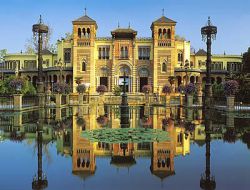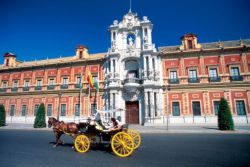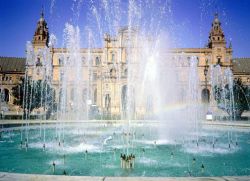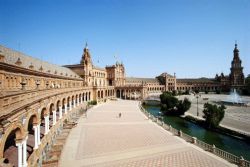Common description
Seville is a city in southern Spain with a population of 700 thousand inhabitants. It is the capital of the autonomous community of Andalusia and the province of Seville. Seville is the fourth most populated city in Spain.
According to legend, Seville was founded by Hercules and its origin is connected with the Tartesian civilization. Seville lies on the banks of the Guadalquivir River, it is one of the largest historical centers of Europe.
Even now, the Arab influence in Seville is very obvious - Andalusia was occupied by the Arabs for about 800 years - although Seville was a cultural capital and long before Arab rule. The fertility of this land and its favorable climate with mild winters and hot summers (if you visit the city in August, the temperature can rise to 47C) made the Phoenicians and Carthaginians settle here. Later the Romans came, two of their emperors Trajan and Hadrian were born here. Later, Seville became the birthplace of famous figures of history, the legendary Don Juan began to conquer female hearts here, and Christopher Columbus from the vicinity of Seville went to open a new world. Carmen Prosper Merimee was an employee of the old tobacco factory in Seville.
Arriving in Seville, you find yourself in the very center of Andalusian culture, in the center of bullfighting and flamenco music. In Seville, the fiery "Sevillanas" was born - a folk dance, without which, they say, there would be no legendary flamenco.
In Seville, there is the La Giralda minaret, which offers amazing views of the city, the Cathedral of Santa Maria de la Cede - the third largest in Europe, the Alcazar Palace, the Santa Cruz quarter with floral balconies, quiet courtyards, narrow streets and richly decorated facades. The cultural treasures of Seville are the house of Pilate, City Hall, the Native American Archive (where historical records of the American continent are stored), the Museum of Art (Spain's second largest art gallery), as well as monasteries, parish churches and palaces.
According to legend, Seville was founded by Hercules and its origin is connected with the Tartesian civilization. Seville lies on the banks of the Guadalquivir River, it is one of the largest historical centers of Europe.
Even now, the Arab influence in Seville is very obvious - Andalusia was occupied by the Arabs for about 800 years - although Seville was a cultural capital and long before Arab rule. The fertility of this land and its favorable climate with mild winters and hot summers (if you visit the city in August, the temperature can rise to 47C) made the Phoenicians and Carthaginians settle here. Later the Romans came, two of their emperors Trajan and Hadrian were born here. Later, Seville became the birthplace of famous figures of history, the legendary Don Juan began to conquer female hearts here, and Christopher Columbus from the vicinity of Seville went to open a new world. Carmen Prosper Merimee was an employee of the old tobacco factory in Seville.
Arriving in Seville, you find yourself in the very center of Andalusian culture, in the center of bullfighting and flamenco music. In Seville, the fiery "Sevillanas" was born - a folk dance, without which, they say, there would be no legendary flamenco.
In Seville, there is the La Giralda minaret, which offers amazing views of the city, the Cathedral of Santa Maria de la Cede - the third largest in Europe, the Alcazar Palace, the Santa Cruz quarter with floral balconies, quiet courtyards, narrow streets and richly decorated facades. The cultural treasures of Seville are the house of Pilate, City Hall, the Native American Archive (where historical records of the American continent are stored), the Museum of Art (Spain's second largest art gallery), as well as monasteries, parish churches and palaces.
Sevilla on map
+ 35°C

















